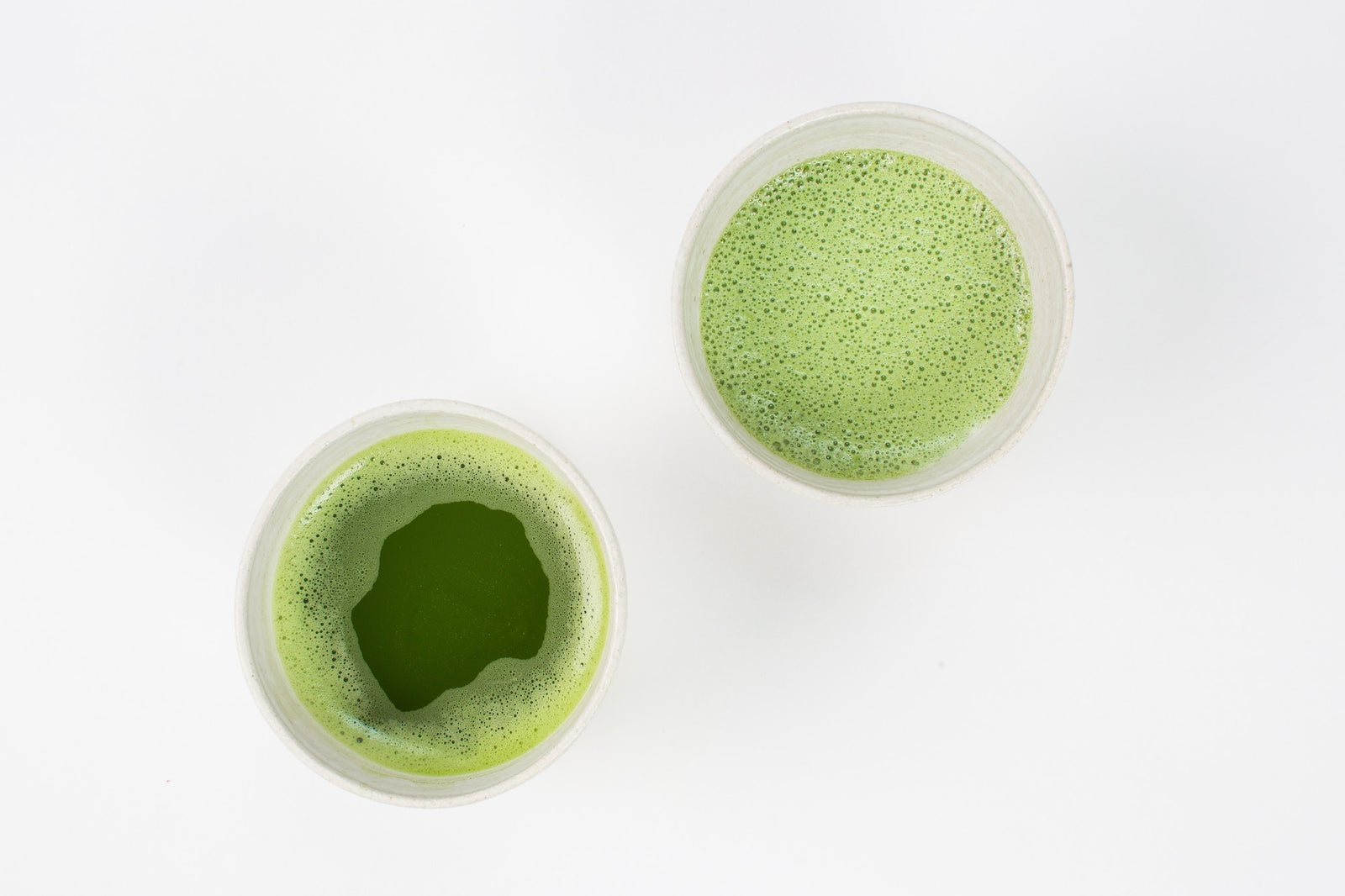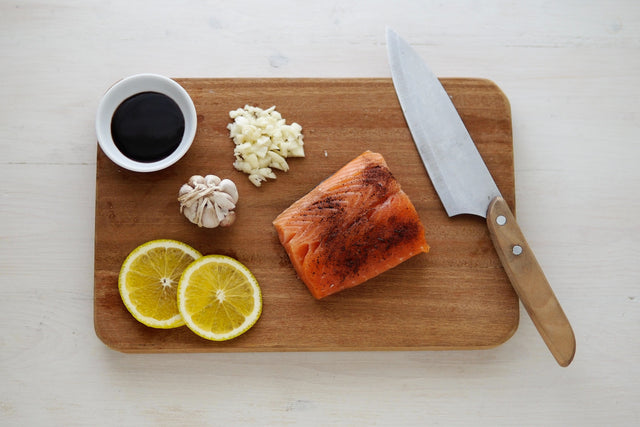Wheatgrass is a popular superfood that is powerful and potent. This is because wheatgrass is loaded with healthy beneficial phytonutrients, amino acids, chlorophyll, and minerals like iron and magnesium. Due to its popularity, chances are you’ll find a tiny green patch of grass growing on the counter at your local juice shop or used as one of the main ingredients in your greens powder. We're going to discuss what the health benefits of wheatgrass are and what it is good for.
What Is Wheatgrass?
Wheatgrass comes from the common wheat plant, Triticum aestivum. Despite its name, wheatgrass is generally considered safe for those who have celiac disease or a sensitivity to gluten. That’s because only the seed of the wheat kernel has gluten, the grass does not. Wheatgrass also has an impressive nutritional profile which boasts numerous health benefits. Rich in vitamins A, C, and E, as well as minerals such as calcium, magnesium, and iron, wheatgrass has been proven to have anti-inflammatory, anti-bacterial, antioxidant, and anti-cancer benefits amongst others.
Wheatgrass is commonly used in supplements, such as green powders due to its nutritional benefits and potency. The idea behind greens is to include powerful superfoods, so you load on more phytonutrients to help bridge the gap in your diet. When you’re purchasing a greens powder, make sure it has powerful superfoods such as wheatgrass, spirulina, and chlorella. Broccoli, kale, and spinach are great, however, they do not contain anywhere near the nutrient density as the aforementioned greens powder supplement ingredients.

5 Evidence-Based Health Benefits of Wheatgrass
Wheatgrass Health Benefits: Contains Valuable Vitamins & Minerals
Wheatgrass is rich in vitamins and minerals as well as amino acids. Specifically, wheatgrass contains Vitamins A, C, and E as well as iron, calcium, and manganese which are all correlated with improving your immune health and reducing the risk of chronic disease.
Of the 17 amino acids, wheatgrass contains, 8 of those amino acids are essential. Essential, meaning your body cannot produce them and they must be obtained through diet or supplementation. Amino acids are considered the building blocks of protein and help increase muscle protein synthesis, as well as protect against muscle mass breakdown.
Wheatgrass Health Benefits: May Help Regulate Blood-Sugar
High blood sugar can cause a host of symptoms and ultimately turn into chronic diseases such as Diabetes. Diabetes is one of the leading causes of morbidity around the world, thus natural remedies are often sought to regulate blood sugar levels, to control and reduce the risk of secondary complications and co-morbidities. An animal study found that wheatgrass reduced the effects of diabetes as well as stabilized insulin levels and liver glycogen [R].
Wheatgrass Health Benefits: Contains Anti-Cancer Properties
Wheatgrass also goes by another name, “green-blood” due to its high potency in chlorophyll. Chlorophyll has a molecular structure similar to hemoglobin and thus results in a high oxygen supply to all bodily tissues [R]. Wheatgrass has already been proven to have anti-cancer health benefits for cervical cancer [R]. A study published in the Journal Of Clinical Diagnosis found that wheatgrass extract reduced cell inhibition by 41.4% in 24 hours on Oral cancer cell carcinoma.
Wheatgrass Health Benefits: May Help Lower Cholesterol
A randomized controlled study, published in the Journal of Dietary Supplements, examined the health benefits of wheatgrass supplementation in a group of 59 women. After ten weeks of supplementation with 3.5g of wheatgrass per day, the intervention group experienced a reduction of 5.4% in total cholesterol (TC), 4.4% in low-density lipoprotein cholesterol, and 9.5% in triacylglycerols [R].
Wheatgrass Health Benefits: May Help Reduce Chronic Inflammation
Wheatgrass is rich in chlorophyll, which contains anti-inflammatory properties. A small randomized double-blind controlled study with a sample size of 23 patients, found that wheatgrass reduced the severity of symptoms of inflammatory bowel disease (IBD) specifically ulcerative colitis [R].

What’s The Best Greens Powder?
Before you buy your greens powder, make sure you look at the ingredients and ensure that it does not contain a blend or complex.
It’s important to find a green powder that is transparent and tells you how much of each ingredient is in your product. Most greens powders use proprietary blends and complexes which do not disclose how much of each ingredient they use. Without knowing the amount you ingest, you won’t know how much of each essential nutrient you’re really getting in your greens powder. Seems shady, doesn’t it? That’s because it is. At Swolverine we use complete transparency and tell you exactly of each ingredient you’re getting.
Manufacturers do this so that they can save money and cut corners, by only sprinkling the ingredients you truly need.
Pay attention to the supplement label and make sure the amounts for each type of greens are listed. Most greens powders will place each category, of ingredient, greens, reds, or probiotics into their own complex and do not disclose how much of each ingredient it has.
Here’s an example of what not to buy. As you can see, each ingredient is in a complex or blend and does not disclose how much of each ingredient it has. It also contains corn maltodextrin in the “other ingredients” aka refined sugar.
Make Sure Your Greens Powder Has Higher Doses Of Wheatgrass
Oftentimes, we think more is better. Wow, this greens powder has more ingredients so it must be better right? Wrong. Just like any other supplement, make sure your greens powder has higher amounts of each ingredient to actually improve your health. If a product has 10g per serving but has 50 ingredients, chances are your product isn't underdosed, it's microdosed. Look for key nutrient-dense ingredients, which have higher doses. You'll actually reap the health benefits that way.
Most studies found that a dose of 2.5-3.5g of wheatgrass per day was necessary for any potential health benefits. When you buy your greens powder, make sure it has at least 2.5g of wheatgrass.
What Is Wheatgrass Good For: Takeaway
Wheatgrass is a potent and powerful superfood. If you have a hard time getting enough veggies or greens throughout the day, wheatgrass is an amazing source of vitamins and minerals to optimize your health and wellness. Despite the amazing nutritional profile, more studies need to be conducted to determine the health benefits of wheatgrass as a potential therapeutic agent, in the treatment of medical conditions.
Looking for an amazing proprietary blend free greens powder to help power your active lifestyle?
Greens+Reds is a high-quality, proprietary blend-free combination of Organic super greens and antioxidant-rich reds. Greens + Reds contains powerfully rich organic super greens from land and sea like Spirulina, Chlorella, Wheat Grass, and reds including Organic beets, Pomegranate, Bilberry, Blueberry and Organic Turmeric to improve your energy levels, bridge the gaps in your daily diet, and promote overall health and wellness.
SWOLVERINE IS AN ENDURANCE ATHLETE AND ACTIVE LIFESTYLE BRAND. MADE FOR THE ELITE ATHLETE, AND THE STRONG-WILLED OUR PRODUCTS WERE DESIGNED TO FUEL YOUR ATHLETIC PERFORMANCE. We perform when you perform
We believe that everyone can optimize not only their athletic performance but their human potential. The way we believe we can optimize performance is through transparency, clinically effective doses, and clinically proven ingredients with evidence-based outcomes. We provide the nutrients you need to power your active lifestyle.
References
Liu Y, Wang MW. Botanical Drugs:Challenges and opportunities:Contribution Linnaeous Memorial symposium. Life Sci. 2008;82:445–49. [PubMed] [Google Scholar]
Singh N, Verma P, Panday BR. The therapeutic potential of organic triticuma estivumLinn(Wheatgrass) in prevention and treatment of chronic disease:An overview. IJPSDR. 2012;4(1):10–14. [Google Scholar]
Kumar N, Iyer U. Impact of Wheatgrass (Triticum aestivum L.) Supplementation on Atherogenic Lipoproteins and Menopausal Symptoms in Hyperlipidemic South Asian Women - A Randomized Controlled Study. J Diet Suppl. 2017;14(5):503-513. doi:10.1080/19390211.2016.1267063
Shakya G, Randhi PK, Pajaniradje S, Mohankumar K, Rajagopalan R. Hypoglycaemic role of wheatgrass and its effect on carbohydrate metabolic enzymes in type II diabetic rats. Toxicol Ind Health. 2016;32(6):1026-1032. doi:10.1177/0748233714545202
Ben-Arye E, Goldin E, Wengrower D, Stamper A, Kohn R, Berry E. Wheat grass juice in the treatment of active distal ulcerative colitis: a randomized double-blind placebo-controlled trial. Scand J Gastroenterol. 2002;37(4):444-449. doi:10.1080/003655202317316088







